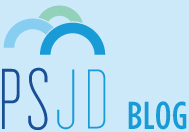December 8, 2009 at 5:29 pm
· Filed under News and Developments, The Legal Industry and Economy
The Washington Post on Monday reported on the impact the recession is having on a major funding source for civil legal services providers. Interest on Lawyers Trust Accounts (IOLTA) programs have been a source of revenue for many legal aid organizations in the United States since the 1980s (see IOLTA.org for more on the history and details of the programs). As the Federal Reserve has cut interest rates in the face of the economic recession, revenue from IOLTA programs has plummeted – “from $371 million in 2007 to a projected $93 million this year” nationally, the Post reports.
This means legal aid providers have seen their budgets cut substantially, forcing everything from service cuts to layoffs and office closures. However, this is in the face of rising demand for civil legal services. The Maryland Legal Aid Bureau has seen a six percent increase in their case load while dealing with an eleven percent budget cut in 2009.
The Brennan Center also has a great analysis of the situation from last February that you can check out to learn more.
Permalink
December 7, 2009 at 5:09 pm
· Filed under News and Developments
A Sunday, Washington Post op-ed by two longtime opponents of welfare reforms enacted in 1996 argues that the reformers’ early self-congratulatory behavior regarding the new welfare system was, to say the least, premature.
A summary of the piece:
As welfare rolls across the country decreased and some former recipients found work in good economic times – the late 1990s boom – even some early skeptics called it a success. But what went largely unnoticed was that even in prosperous times many who left the rolls did not find enough work to lift themselves from poverty; and others slipped into more abject poverty as the old safety net was, by design, left in tatters. The 2001 economic downturn exposed, to close observers, more of the new saftey net’s vulnerabilities. But it is now, during the so-called “Great Recession” that the failure of the American welfare system to work for the swelling numbers of families who most need it are cast in stark relief.
Temporary Assistance for Needy Families (TANF), which is the federal government’s cash welfare program, supports about 5 million Americans. This one third the amount of people it supported in 1994, even though the country is presently enduring its worst economic crisis since the 1930s. The number of homeless Americans has risen by 61% in the past two years, and in 2008 alone the number of Americans in poverty rose by 2.5 million. Still the TANF system, unlike the food stamp and unemployment insurance programs, has not expanded to catch Americans falling into poverty.
The op-ed is partisan in tone, and is critical of conservatives and centrist-Democrats who once touted a slash in the welfare system as being the best medicine for the nation’s poor. But the apparent failure of the system to support so many of the country’s impoverished families during a severe economic downturn does raise nonpartisan questions about how well crafted the reforms were. (Unless, as the authors point out, alleviating national poverty was never a reform goal: “If the real purpose of welfare reform was simply to reduce the rolls, it’s been a smashing success.”)
Permalink
December 3, 2009 at 10:58 am
· Filed under Career Resources
Just a quick note here. In case you’re looking for more online reading opportunities, Laws.com put together a list of the “Top 50 Justice Blogs.” Aaron over at Equal Justice Works blogged about it earlier this week.
Permalink
December 1, 2009 at 1:06 pm
· Filed under Career Resources, News and Developments, The Legal Industry and Economy
Georgetown and UC Berkeley plan to “dovetail their forgiveness policies” with the College Cost Reduction and Access Act of 2007 for eligible graduates who commit to public service careers, according to the National Law Journal. Essentially, the schools will cover the graduates’ payment obligations through the CCRAA’s Income Based Repayment (IBR) program for 10 years, at which time their remaining debt could be forgiven through Act’s Public Service Loan Forgiveness provision. Students who are able to reap the full benefit of these programs should be able to finance their legal educations for free.
Since the CCRAA’s passage, there has been much discussion about the interplay between its repayment and loan foregiveness provisions and those of other programs, whether law-school based, employer based, and so forth. GULC and Berkeley are placing CCRAA at the center of their LRAP solar systems, and other LRAP programs will revolve around it.
Permalink

